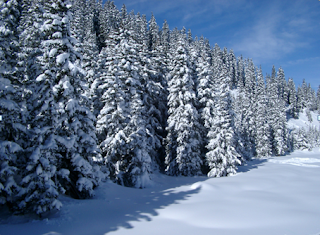How much mph winds heart up as they descend, evaporating all water, ice and snow in their path ?
The amount of mph winds heat up as they descend depends on a number of factors, including the initial temperature of the air, the height of the mountain range, and the angle of the descent. However, in general, winds can heat up by 5 to 10 degrees Fahrenheit for every 1,000 feet of descent.
This is because the air pressure decreases as the air descends. When air pressure decreases, the air molecules spread out and the temperature increases. This process is called adiabatic heating.
When winds heat up as they descend, they can evaporate all water, ice and snow in their path. This is because the increased temperature of the air causes the water vapor to condense into water droplets. The water droplets then evaporate, leaving behind dry air.
This process can be seen in a number of places around the world, including the Santa Ana winds in California and the Foehn winds in the Alps. These winds are known for their hot, dry air, which can cause wildfires and other problems.
Here are some examples of how adiabatic heating can cause winds to heat up and evaporate water:
- Santa Ana winds: The Santa Ana winds are a type of downslope wind that blows from the mountains to the coast in southern California. These winds can reach speeds of up to 100 mph and can cause temperatures to rise by 20 degrees Fahrenheit or more. The hot, dry air from the Santa Ana winds can cause wildfires and other problems.
- Foehn winds: The Foehn winds are a type of downslope wind that blows from the Alps to the foothills. These winds can reach speeds of up to 120 mph and can cause temperatures to rise by 30 degrees Fahrenheit or more. The hot, dry air from the Foehn winds can cause avalanches and other problems.
It is important to note that adiabatic heating is not the only factor that can cause winds to heat up. Other factors, such as the sun's radiation and the presence of dust or smoke, can also contribute to wind heating.
Katabatic winds, which are strong, dry, and cold winds that flow downhill due to the force of gravity, can certainly contribute to evaporation and sublimation of water, ice, and snow in their path. The speed of these winds and their warming effect as they descend can vary based on local conditions and topography. However, the process of warming due to adiabatic compression as air descends doesn't necessarily cause the winds to heat up to high temperatures.
The rate at which air warms or cools as it ascends or descends is known as the adiabatic lapse rate. The dry adiabatic lapse rate is around 10°C per 1000 meters (6.5°F per 1000 feet) of elevation change. So, as katabatic winds descend, they can indeed warm up due to compression, but the temperature rise is not usually extreme.
The primary impact of katabatic winds in cold regions like Antarctica is their ability to dry out the landscape. These winds can evaporate and sublimate moisture from the surface, including any exposed ice and snow, which contributes to the arid conditions of areas like the McMurdo Dry Valleys.
Regarding wind speed, katabatic winds in Antarctica can vary widely. They can reach speeds of 40 to 50 mph (64 to 80 km/h) or even higher in some cases. However, the primary effect on evaporation and sublimation comes from the dryness of the air and the interaction with the cold surface rather than extreme heating due to compression.





0 Comments